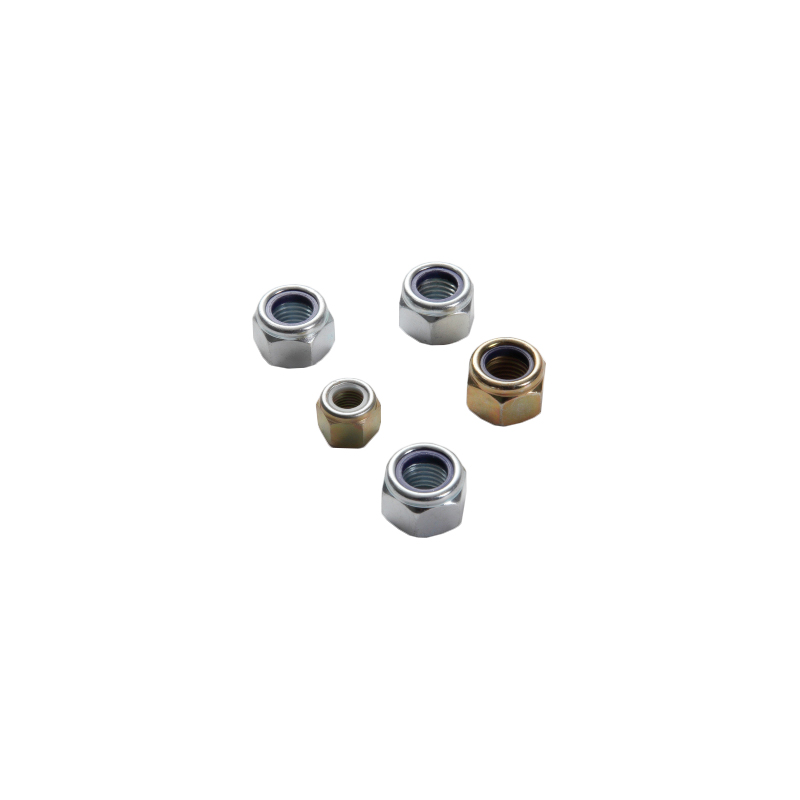Understanding How Automotive Hexagon Lock Nuts Use Engineering Principles to Resist Vibration and Ensure Secure Connections
Automotive Hexagon Lock Nuts play a crucial role in preventing the loosening of fasteners subjected to constant vibration and dynamic forces. These specially designed nuts combine the simplicity of a hexagonal shape with integrated locking mechanisms to maintain a firm grip on bolts and studs, especially in demanding automotive environments. The underlying engineering principles behind these lock nuts explain why they are preferred for applications requiring reliability and safety.
Vibration is a common cause of fastener failure, as repetitive motion can gradually reduce the clamping force holding components together. This happens because vibrations generate small, rapid movements that can overcome friction and allow a nut to rotate loose. Automotive Hexagon Lock Nuts counteract this by incorporating features that increase the resistance to loosening without compromising ease of assembly. The locking mechanism is typically achieved through thread deformation or the use of inserts that create prevailing torque.
One common method involves slightly deforming the threads of the nut, creating interference between the nut and the bolt threads. This deformation increases friction, which requires additional torque to turn the nut after installation, making it much harder for vibrations to back the nut off unintentionally. Another popular variant uses nylon or polymer inserts inside the nut, which clamp tightly on the bolt threads and provide a spring-like grip that resists loosening while maintaining reusability.
The hexagonal shape itself offers practical benefits. It provides six flat surfaces for wrench or socket engagement, allowing installers to apply precise torque and control the fastening process. Accurate torque application is vital to ensure that the clamping force is sufficient to hold assemblies together without damaging components. Proper tightening maximizes the locking effect and extends the service life of the fastener.

Understanding the specific environment in which automotive hex lock nuts are used is also critical. Components in engines, suspensions, and chassis systems face not only vibration but also thermal expansion, shocks, and exposure to dirt or moisture. The design of these nuts must account for such factors, selecting appropriate materials and locking mechanisms that maintain effectiveness despite harsh conditions. This knowledge allows manufacturers like us to tailor fasteners that perform reliably in the most challenging settings.
The physics behind these nuts involves balancing friction, torque, and elasticity to achieve a stable connection. The locking feature increases the frictional force that resists rotational movement, while the hex shape facilitates the correct application of torque to engage that friction properly. By carefully controlling these factors during design and production, Automotive Hexagon Lock Nuts maintain their grip over long periods, preventing costly failures and downtime.
As a manufacturer with extensive industry experience, we emphasize the importance of choosing the right type of lock nut for each application, considering thread size, material compatibility, and environmental conditions. Our precision-engineered automotive lock nuts offer dependable performance, helping clients maintain safety and durability in their assemblies. Selecting the appropriate locking fastener not only ensures component integrity but also boosts overall product quality and customer satisfaction.
Automotive Hexagon Lock Nuts are more than just simple fasteners; they represent a sophisticated solution grounded in mechanical engineering that solves one of the most common challenges in assembly reliability. Their design merges form and function to deliver secure, vibration-resistant connections, making them indispensable in automotive manufacturing and repair. Understanding the principles behind their operation empowers buyers to make informed decisions that protect investments and enhance performance.
And Get A Free Consultation!

 English
English 中文简体
中文简体

